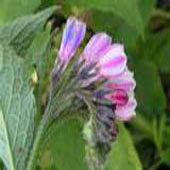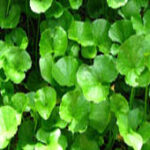BioActive Ingredients
Protease
Pisum Sativum Oligopeptide
UltraMicro Hyaluronic Acid
Phloretin
Adenosine
Lupinus
Oat Beta Glucan 80
Centella Asiatica Extract 80
Centella Asiatica Extract 80 has the ability to stimulate the synthesis of collagen and improve tensile strength of the skin, playing a major role in suppressing inflammation by inhibiting the release of pro-inflammatory cytokines, boosting antioxidant activity at the site of wounds, and strengthening the skin and increasing blood circulation.
Planton
Plankton – marine ingredient acts on various stages of melanin production and deposition in the skin to improve luminosity and decrease visibility of hyperpigmented areas to even out the skin tone. This extract has a brightening effect and homogenizes skin complexion by reducing melanin content, size and contrast of dark spots. It also boosts collagen and elastin synthesis and decreases the formation of advanced glycation end products (AGEs), for a brighter and younger look. (Lipotec)
Alpha Arbutin
GigaWhite
Dipotassium Glycyrrhizate

Centella Asiatica Extract
Apart from the beauty use of Centella asiatica, it is also of great help when used on post-operation and trauma scars, as it promotes healing, yet helps to prevent the formation of excess scar tissue. Its historic use was in the healing of leprosy wounds, as well as ulcerated skin, wounds, burns and ulcers. Research has shown that asiaticoside can also help provide treatment for leprosy and skin tuberculosis, as the bacteria are coated in a wax-like substance that the body’s immune system can not penetrate, but this waxy coating is dissolved by centella, thereby allowing the body’s immune system to destroy the bacteria. The main active ingredients contained in Centella asiatica are triterpenes asiatic acid and madecassic acid,together with triterpenoid ester glycosides – known as asiaticoside and brahminoside. The asiaticosides and triterpenes extracted from the plant have modulating properties on the development and metabolism of connective tissue, improve the synthesis of collagen and other tissue proteins by modulating the action of fibroblasts in the vein wall, and stimulate collagen remodeling in and around the venous wall. It is especially the triterpenoids that are thought to stimulate the production of collagen and assist with wound healing. They therefore improve wound repair, with a better re- epithialisation and a normalization of perivascular connective tissue, thus allowing an improvement of the venous wall tone and elasticity. It is found that in poor connective tissue conditions, the triterpenes in Centella asiatica are able to renew the collagen, in quantity and quality, and restore tissue firmness and skin elasticity, improving skin appearance and comfort. Apart from this,it also have anti-psoriatic properties.These saponins also help prevent excessive scar formation, by modulating and slowing down the excessive production of collagen (the material that makes up con nective tissue), at the wound site and also increases the concentration of antioxidants in wounds. Various studies have supported these actions of centella and furthermore have been shown it to be effective in treating surgical wounds, skin grafts, gangrene, traumatic injuries, burns, chronic skin lesions, ulcers and even leprosy wounds. It has great importance in preventing and correcting venous insufficiency.

Echinacea Extract
Echinacea extract contains echinacin, essential oils and resins as well as several polysaccharides. The extract acts 6as a antimicrobial agent. Echinacea supports the healing process of minor skin injuries, sun burns and couperosis. The nutrient-rich echinacea is used in skin care particularly for oily skin with a tendency to blackheads and inflammation. Echinacea purpurea formulations have been shown by investigators to be safe and wll tolerated (Wien. Med. Wochenschr. 1999;149;185-9). Much of the research on this native American herb has been conducted in Germany, where commercial cultivation began around 1939(Forsch. Komplementarmed. Klass. Natureheikd.2003;10:9-12). One of the earliest studies of the effects of Echinacea on the skin was conducted 20 yearsago using E. angustifolia. An extract of the roots displayed sufficient anti-inflammatory activity to warrant inclusion in cosmetic formulations.The topically applied raw extract was shown to dose-dependently inhibit edema induced by the application of various irritants to mice and rats. The extract was stronger than the positive control, the topical nonsteroidal anti-inflammatory agent benzidamine (Food Chem. Toxicol. 1985;23:317-9). The investigators concluded that these typical Echinacea constituents effectively protected collagen from free-radical damage by scavenging reactive oxygen species and/or C-,N-,and S-centered secondary radicals.Significantly, they suggested that the topical application of Echinacea extracts has the potential to prevent to treat UV-induced photo- damage(Planta Med. 1995;61:510-4). Echinacea purpurea also has been recommended as a tool in the a rma-mentarium for treating psoriasis as well as alleviating the inflammation characteristic of several cutaneous conditions(Clin.Dermatol.2001;19:474-7). In a topical formulation, Echinacea has been shown to be effective in treating eczema, first-degree burns, and HSV (Dermatol. Ther. 2003;16:106-13). Although potentially protecting the skin from photodamage, researchers have also found thatEchinacea possesses phototoxic attributes against certain fungi.
Grape Seed Extract
Grape seed extract contains proanthocyanidins and resveratrol, which are both powerful antioxidants, and also contains linoleic acid, which may be beneficial in helping to treat acne, allergic reactions, ermatitis, atopic eczema and dry, itchy skin.Antioxidants protect cells from unstable molecules that can cause damage to healthy cells, on the skin and in the body ,accor-ding to the National Cancer Institute. Two of the most famous antioxidants are vitamins E and C.Grape seed extract contains several plant compounds, including oligomeric proanthocyanidins, or OPCs. OPCs are powerful antioxidants, and according to a report form the Food Research Center in Canada.OPCs in grape seed extract contain 20 times the antioxidant power of vitamin E and 50 times the antioxidant power of vitamin C.The report, published in the winter 2003 issue of “Journal of Me-dicinal Food” States that grape seed extract can protect the body from sun damage.Protecting the skin from sun damage will maintain, or improve, the overall appearance of the skin. Researchers in the “Journal of Medicinal Food” report claim that grape seed extract benefits the skin’s appearance by bonding with collagen, which is the building block of healthy skin, maintaining skin cell health as well as the skin’s elasticity. The antioxidant power of the OPCs in grape seed extract is credited for these benefits as well A paper from Vanderbilt University in Tennesse explains the process by which antioxidants, or OPCs, protect and improve skin appearance. Free radicals, which are molecules that damage healthy cells, have an unpaired electron. To make up for this lack, the free radical will try to steal an electron from healthy protein in the skin. When this happens, it sets off a chain reaction, because the healthy cell that was stolen from is now a damaged cell,and looks to steal an electron from another cell.Wha t this leaves behind is a chain of damaged molecules,and the skin’s cellular structure is now weakened. The antioxidant power of grape seed extract fights the free radicals, and protects the skin from damage. Free radicals can develop as a result of sun damage, pollution, cigarette smoke and even stress.
Licorice Extract
Licorice is really a multifunctional skin care ingredient. Skin whitening is just one of its beneficial properties. It has also been shown to protect skin from externals such as bacteria. While it also helps shield the skin from the harmful UV rays, thus helping keep skin looking younger and hyperpigmentation from reoccurring. It works great in odds spots and sensitive spots. Studies suggest it may also inhibit the skin’s tyrosinase activity and melanin production, making it a potential lightening/brightening agent that prevent hyper-pigmentation. Further studies have shown it to halp reduce the redness and irritation commonly associated with various ailments such as Rosacea, Psoriasis and Acne. Published in the International Journal of Dermatology in 2000, a clinical trial involving people withmelasma found that those who applied a cream containing the licorice extract liquiritin twice each day for one month experienced a 70% improvement in their condition. The study participants who used placebo cream experienced only a 20% improvement. Glabridin, one of its actives was found to be an effective skin brightener and whitener, glabrene was found to be a powerful antioxidant. Another active, licochalcone, was found to have several benefits including anti-acne, sebum control, and the ability to kill off bacteria. It was also found to have sunscreen properties that help protect the skin from UVA and UVB rays. Licorice extract contains glycyrrhizin and flavonoids, which are thought to produce anti-inflammatory action in the skin according to the University of Michigan Health System. The glycyrrhiza extract in licorice may be responsible for its actions in healing canker sores as well. Another substance found in licorice called liquiritin may help treat the skin pigmentation disorder. The anti-inflammatory properties of licorice make it a good remedy for rosacea, a skin condition caused by the inflammation of blood vessels, usually in the areas of the face and nose. If left untreated, rosacea can lead to permanent swelling. Teenagers and adults who suffer from acne can benefit from the anti-inflammatory properties and the elimination of bacteria that licorice provides.
